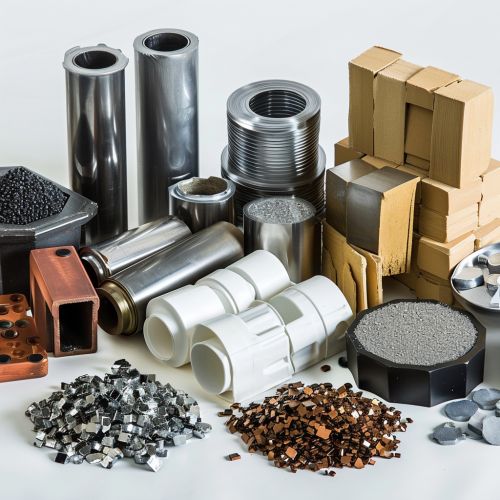Materials
Introduction
Materials are the substances or components with which something is made or from which something can be made. They can be natural or synthetic, and they play a crucial role in the construction and manufacturing industries, as well as in everyday life. Materials can be classified into different categories based on their properties such as physical, chemical, mechanical, and electrical properties.


Classification of Materials
Materials can be broadly classified into four main categories: metals and alloys, polymers, ceramics, and composites. Each of these categories has unique properties that make them suitable for specific applications.
Metals and Alloys
Metals are typically malleable, ductile, and good conductors of electricity. They are composed of one or more metallic elements and often have nonmetallic elements or compounds interspersed within their structure. Alloys are a combination of two or more metals or a metal and another element. They are designed to have properties that are superior to those of the individual metals.
Polymers
Polymers are large molecules composed of repeating subunits called monomers. They can be natural, such as rubber and silk, or synthetic, such as plastics and resins. Polymers are typically lightweight, resistant to corrosion, and have low electrical and thermal conductivity.
Ceramics
Ceramics are typically hard, brittle, and resistant to heat and chemical attack. They are generally made by taking mixtures of clay, earthen elements, powders, and water and shaping them into desired forms. Once the ceramic has been shaped, it is fired in a high temperature oven known as a kiln.
Composites
Composites are made from two or more distinct materials that, when combined, retain their own individual properties while also producing a final product with unique characteristics. The individual components remain separate and distinct within the finished structure.
Properties of Materials
The properties of materials determine their utility and applications. These properties can be classified into four main categories: physical properties, chemical properties, mechanical properties, and electrical properties.
Physical Properties
Physical properties of materials include density, color, hardness, melting and boiling points, and refractive index. These properties are usually measurable and observable without changing the chemical composition of the material.
Chemical Properties
Chemical properties of materials describe how they react with other substances or change from one substance to another. These properties include reactivity, flammability, and oxidation states.
Mechanical Properties
Mechanical properties of materials describe their behavior under the action of external forces. These properties include strength, ductility, hardness, malleability, toughness, elasticity, plasticity, brittleness, and fatigue resistance.
Electrical Properties
Electrical properties of materials describe how they respond to an electric field. These properties include conductivity, resistivity, dielectric constant, and permittivity.
Material Science
Material science is an interdisciplinary field involving the properties of matter and its applications to various areas of science and engineering. It includes elements of applied physics and chemistry, as well as chemical, mechanical, civil and electrical engineering.
